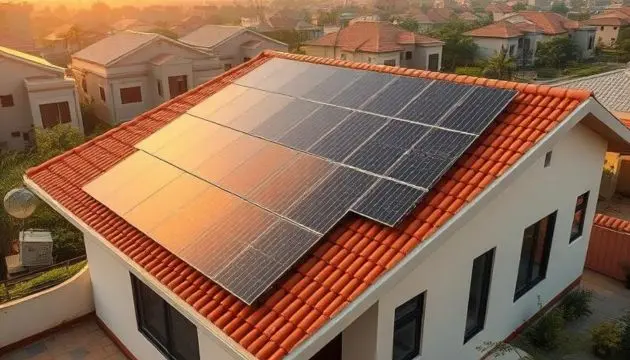ISLAMABAD: Pakistan has quietly become the world’s largest importer of solar panels, according to a global report by the British energy think tank Ember.
Ember has revealed that, despite no major legislation, no global investment offensive, and no prime minister announcing a green revolution, Pakistan imported more solar panels than almost any other country in the world by the end of 2024.
The report states that Pakistan imported 17 gigawatts of solar panels in 2024 alone, making it one of the world’s leading solar markets—an increase double that of 2023.
According to the report, this expansion of Pakistan’s solar imports is particularly surprising because it did not occur under any national program or large-scale organized project but through the personal efforts of consumers.
Most of the demand comes from households, small businesses, and commercial establishments seeking cheap and reliable energy rather than expensive and unreliable government electricity.
According to experts, the transition to solar is a survival attempt by people and businesses increasingly excluded from the national grid due to ineffective planning and uncertain supply. It marks a fundamental shift in energy thinking in Pakistan.
In fiscal year 2024 alone, Pakistan’s solar panel imports accounted for almost half of the country’s total electricity demand. Experts say the national power system must change to stay useful because the current setup can’t keep up with this fast shift, and better planning is needed to make this change workable and lasting.
ALSO READ | Federal govt decides to build hostel for working women in Islamabad
Industry experts note that, although regulators have allowed net metering and some import relaxations, Pakistan’s solar generation connected to the state grid remains very low, indicating that most new installations are operating off-grid and are not included in national electricity figures.
Despite importing record volumes of solar panels, Pakistan’s solar capacity connected to the state grid remains very low, suggesting that most new solar systems are operating off-grid or behind the meter, where they are not included in national electricity figures.
This discrepancy between ground-level installations and government planning is already causing concern. Grid operators and utility companies are struggling to adapt to the impact of widespread self-generation, especially in urban areas where high-value customers generate their own electricity during the day and rely on the grid only as a backup.
This dynamic trend, sometimes referred to as a “utility death spiral,” could weaken the financial base of public energy providers while placing new pressure on the electricity system during evening hours. In its analysis, Ember warns that this kind of rapid, decentralized growth requires updated planning and regulatory tools to avoid instability.
The report states, “This deployment must be accompanied by updated system planning and a regulatory framework to ensure a sustainable and orderly transition.”
While the focus has largely been on solar, wind, hydropower, and bioenergy are also playing an increasing role in Pakistan’s broader renewable energy system.
However, solar is by far the fastest-growing sector, particularly because it can be installed on a small scale with minimal government hurdles. In a country that has long faced governance and infrastructure delivery challenges, the modular nature of solar technology has made its adoption possible without major government investment.
ALSO READ | Justice Ali Baqar Najafi gets majority vote for Supreme Court seat
The 2024 import figures not only reflect growing consumer interest but also point to the falling prices of solar technology worldwide, especially Chinese-made solar modules, which dominate the international supply chain.
The mix of cheaper solar equipment, unstable local fuel prices, and ongoing power shortages has made solar the most cost-effective energy option in Pakistan today.












